SingTheOffice was released almost three years ago on the Sunday before Lent (Quniquagesima) 2021. The goal has always been to make the learning and practice of a chanted daily office less unnecessarily difficult. According to the feedback received, the site in its present form, only tweaked since 2021, has gone a significant way to making this a reality, but there has been much room for improvement, and in the last year we have turned our attention to what a “second edition” of the site may look like.
TL;DR: Ordinariate liturgies and calendar, 1662 Psalter, continental psalm tones, Antiphons on the Ben and Mag, more hymns and canticles, fewer confusing configuration options — previous version still accessible if you don’t like the new one.
In search of a standard
In early 2021 when SingTheOffice was first released, there were only really a few “live options” for daily offices in the English Prayerbook tradition: really just the 1662 itself, and a number of updated American versions. Other options like the 1928 deposited book, the English Office and Paul Hartzell’s books were very niche, and things like Common Worship Daily Prayer are not really in the Prayerbook tradition. With SingTheOffice we ended up going with a “house blend” of elements from the 1662 with a few aspects borrowed from American editions, including the text of the Psalter from the 1928 American book. We also followed some arguably-esoteric choices of the St Dunstan’s Plainsong Psalter, such as use of the Sarum psalm tones.
Since then, there have been a number of new texts putting forward forms of the Prayerbook office. Just after SingTheOffice was launched, IVP launched its very lightly updated international edition of the 1662 book, and Lance Davis launched his impressive personal project, the Anglican Office Book. A few months later, as most readers will be aware, CTS launched an office book aimed at the Ordinariates for former Anglicans — Divine Worship: Daily Office (Commonwealth Edition). Over the last couple of years, this has been received with almost universal acclaim (where it counts). Criticisms of this book are generally regarding font size, form factor, typos and the like, whereas the substantive decisions around the content have been widely regarded as essentially optimal for a serious user of the English daily office. As someone recently put it to me, “the people who put this together were clearly well versed in what works.” The offices of morning and evening prayer contained within that book are from the 1662 book almost unchanged, including the Psalter, which has only had the Tetragrammaton substituted. To this is added a calendar that is matched — or at least closer — to the practice of most throughout the Western world, the well-regarded 1961 English lectionary, and a bank of supplementary antiphons, hymns, and verses, mostly drawn from The English Office, that provide the slight enrichment to the bare 1662 offices that most persistent users end up seeking.
Owing to its conservative, practical choices and broad appeal, we believe this book should be seen as the de facto standard text for present day practice of the English Prayerbook daily offices of Mattins and eEensong, and so in the second edition of SingTheOffice we have complied fully with its rubrics (or have at least intended to).
New Mattins and Evensong liturgies
Users of these new liturgies will first find themselves presented with a list of options of which office to celebrate that day. On many days there is only one option, the feria, but sometimes an optional memorial or a regional observance is given. Outranked observances are still accessible, which means that if you are, say an Anglican who does not want to observe the Assumption of the Blessed Virgin Mary, you can select the feria that day even though the system considers it outranked by the Solemnity.
Once an observance has been selected, users will find a new setting of the Coverdale psalms, this time set to the more widely-used continental Psalm tones as found in the Liber Usualis.
The Venite and Jubilate have been provided in one new setting native to the Invitatory of the Roman Office, allowing the invitatory antiphons to be set to a corresponding melody.
A much wider selection of hymns than before is provided, always preceding the Benedictus or Magnificat, and accompanied by the appointed Versicle and Response, pointed for chant.
Antiphons for the Benedictus and Magnificat are provided in their full plainsong melodies. Most of the Antiphons in the supplimentary material come from either the Monastic or Sarum offices (via The English Office) and owing to the work of G H Palmer and Winfred Douglas about a century ago, English plainsong settings of almost all of the relevant antiphons exist in some form, and have been included here, with occasional tweaks. In a few cases it was necessary to adapt a Latin setting for (apparently) the first time. Astute observers will note that we are relying heavily here on General Introduction (10.) which states that “[texts] may be replaced by musical settings that rely on a different translation of the same text.”
For those [speaking for myself!] who find sight-singing the fully-set Antiphons too difficult, they can be switched to a simplified form where the same text is set to the “Solemn Psalm Tones” commonly used for the Introit psalm verses at Mass.
A full complement of optional Old Testament canticles has been provided to replace the Te Deum on ferias and memorials.
Finally, the somewhat well-known “Solemn Ambrosian” setting of the Te Deum in English has been provided, with a simple alternative in a psalm tone available on all days when the Te Deum is required to be sung, in case this one is yet to be learned.
Conclusion
By standardising on this form of the office, we are moving away most of the complicated configuration options from the first edition of SingTheOffice. Mostly, these provisions were effort focussed in the wrong place. For example, it was possible to choose from several places within the order of the liturgy where the office hymn could appear, but only a relatively small selection of hymns was actually provided. And even where the configuration options do seem desirable, they create a “me and my custom daily office” fragmentation when used, and were not used by 90% of visitors to the site anyway. So the goal is to offer something fuller and richer, and yet simpler to use.
For those who prefer the old offering, this option is currently still available. Any feedback on SingTheOffice, especially the reporting of errors, is much appreciated, and as with any new release, your forbearance around any bugs, mistakes, and oversights is gratefully received.



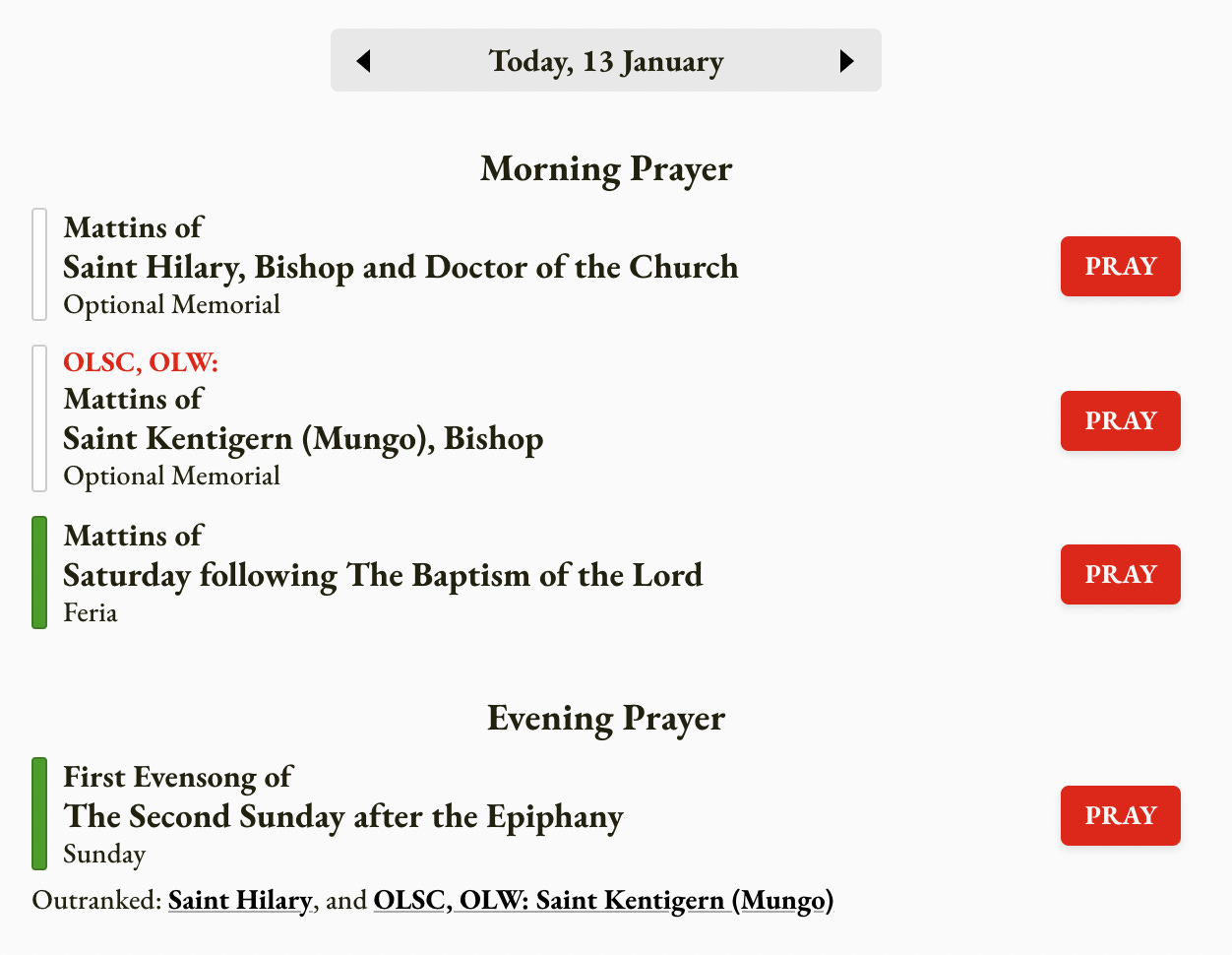

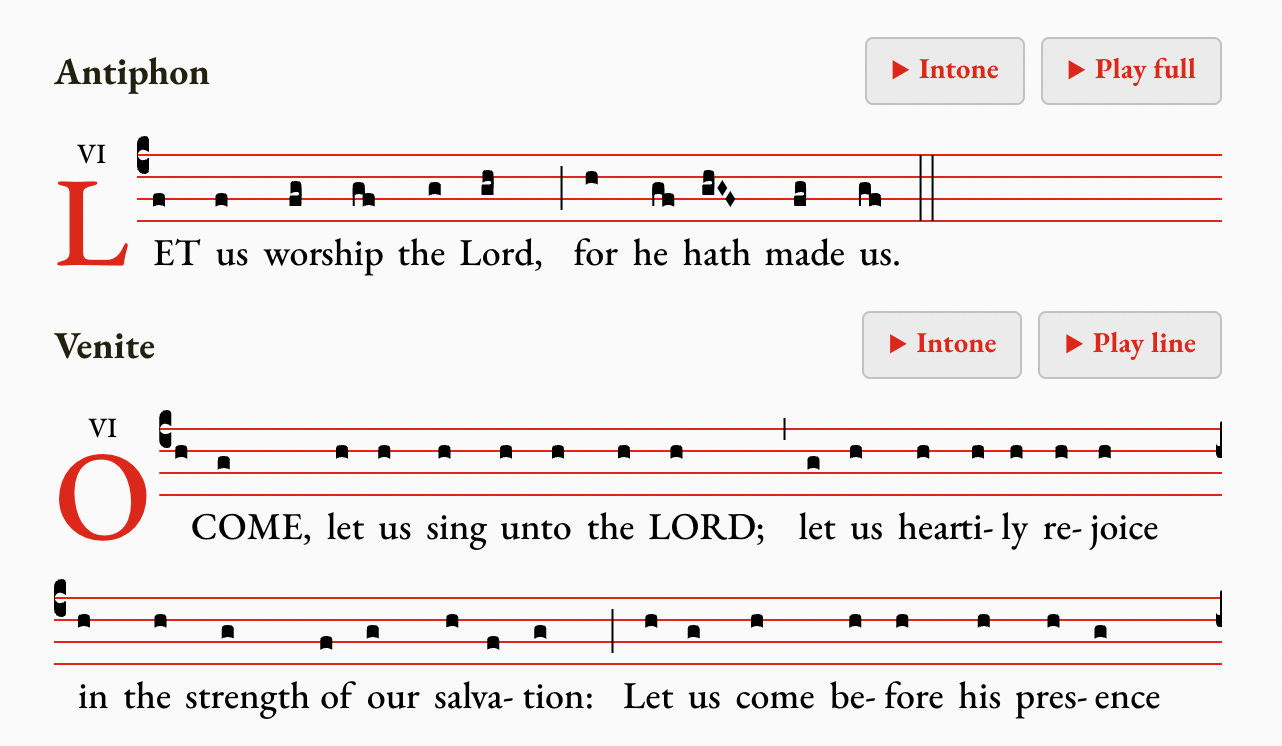
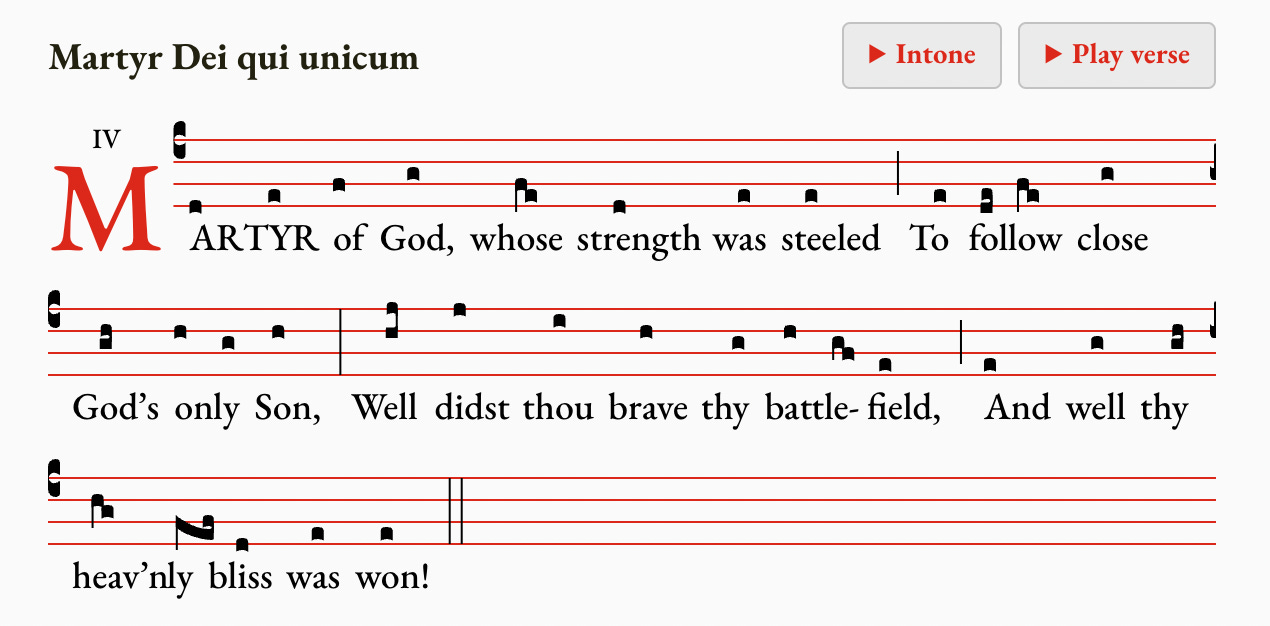
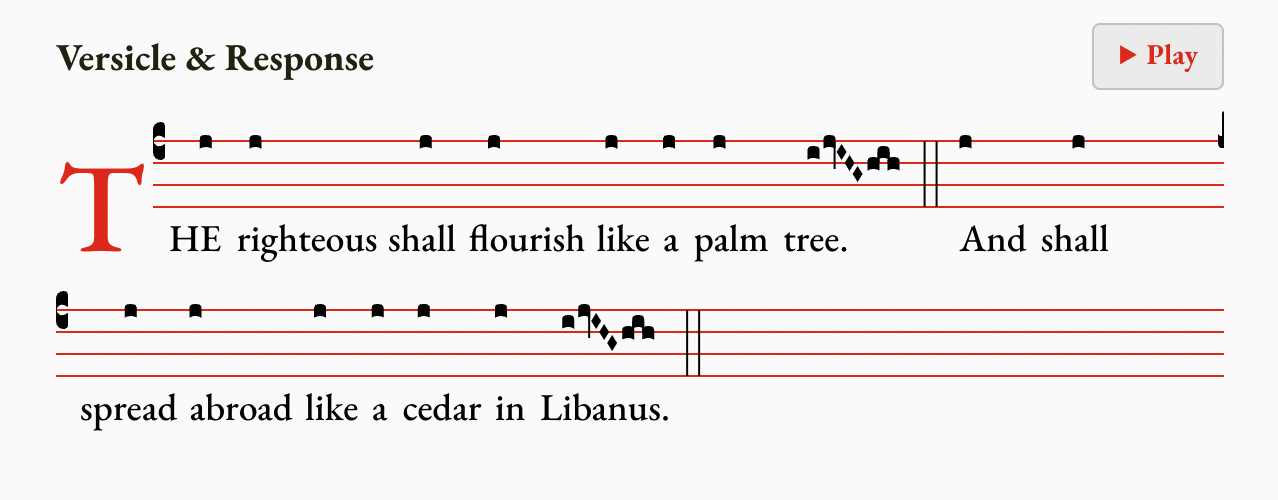
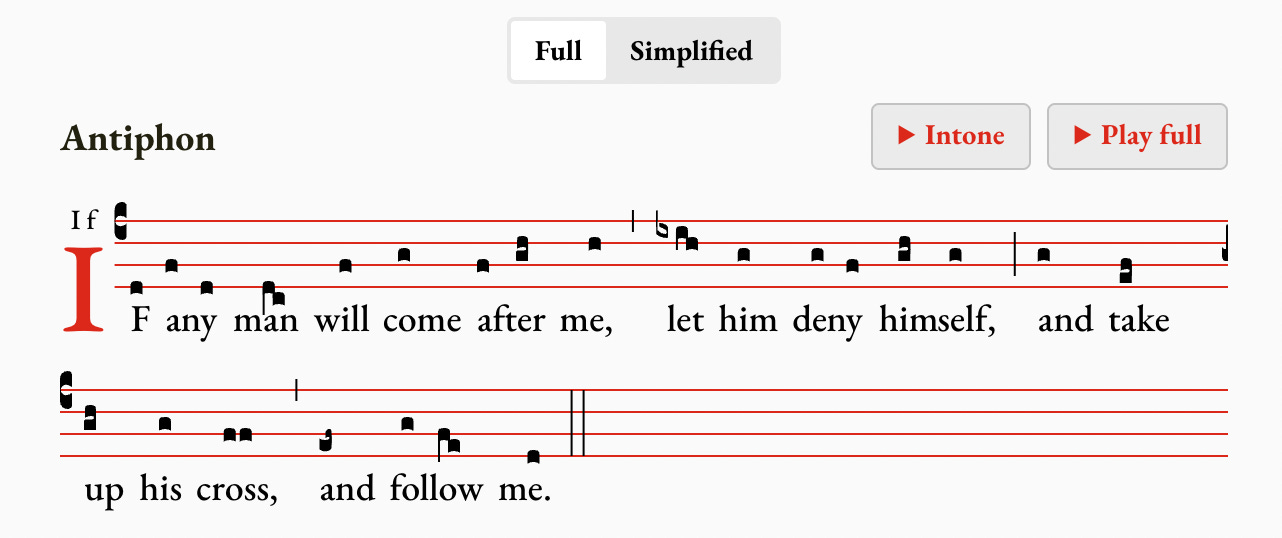
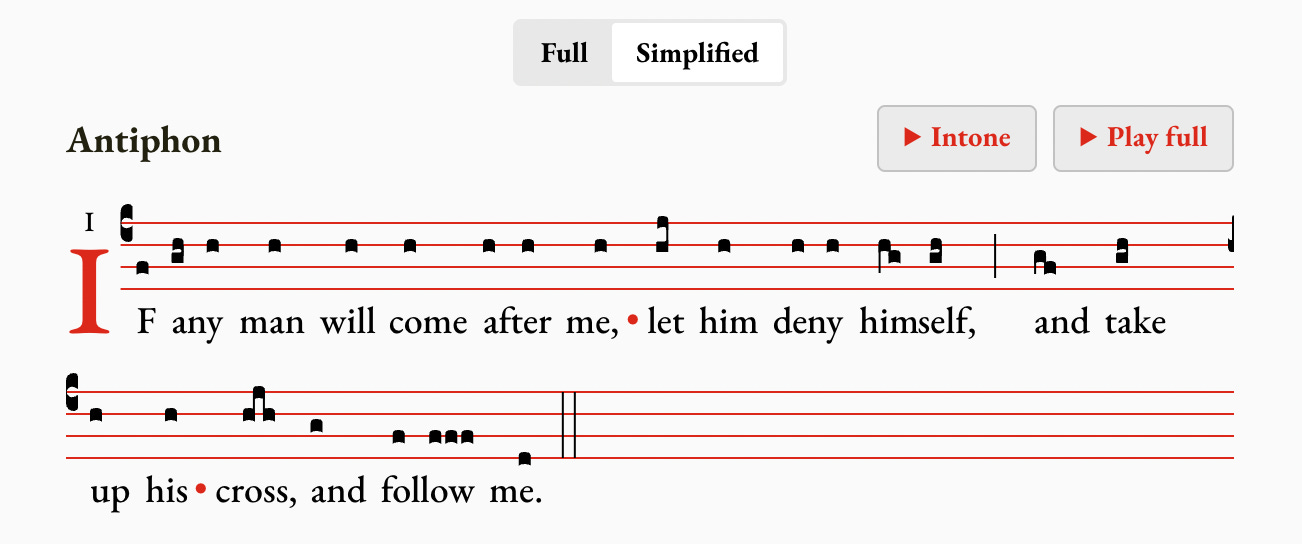
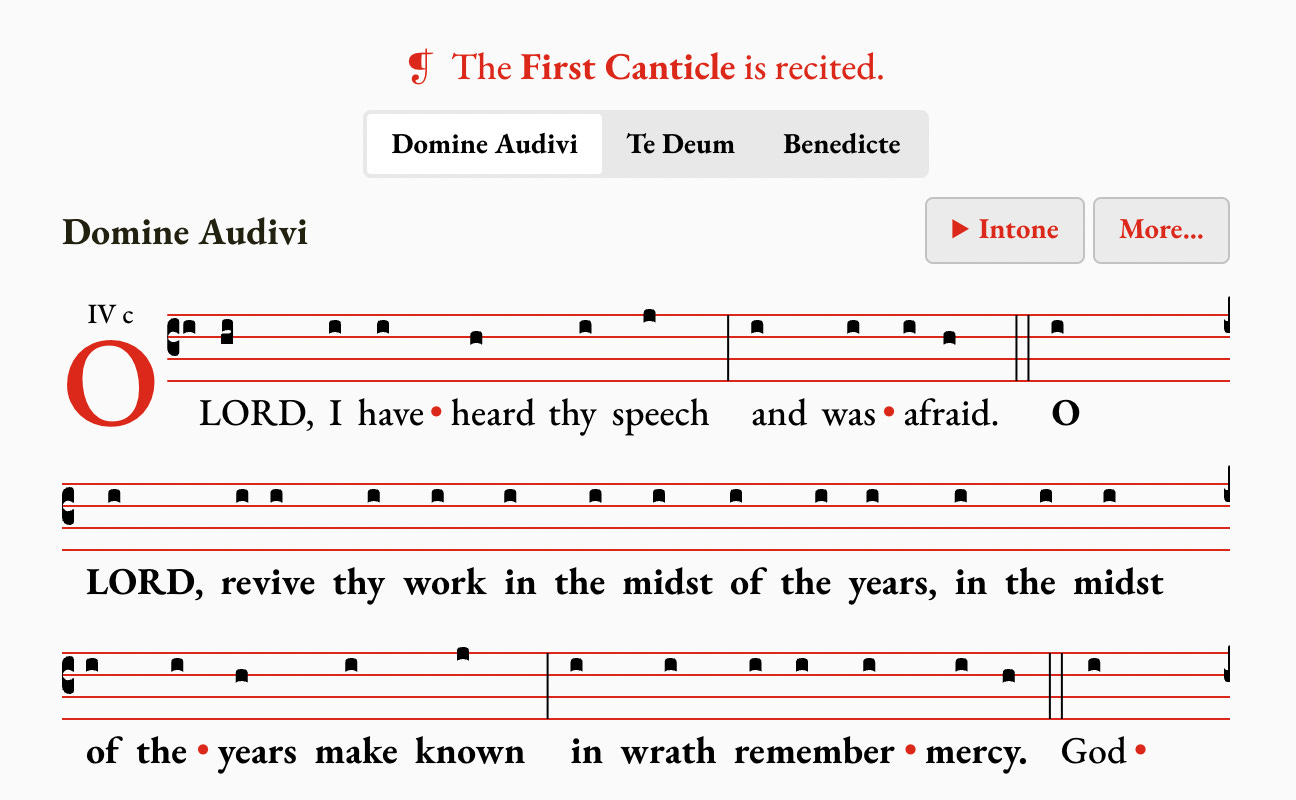
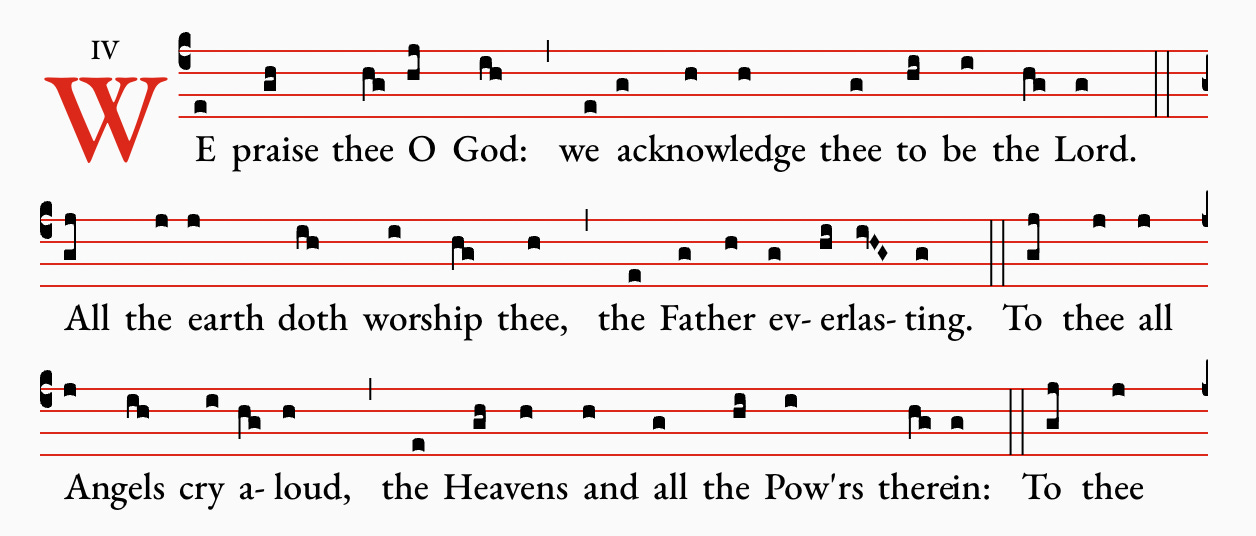
Where can I find all of this in print? I prefer to use books when praying, but I will direct anyone who wants to pray with me to this website. I already own the Ordinariate Commonwealth Daily Office, I would just like to know where I can find the musical notes like this website has
Fantastic news! Although Sarum Chant enthusiasts like myself will feel the loss and perhaps use the earlier edition of the psalms, the improvements announced here are such an encouragement.